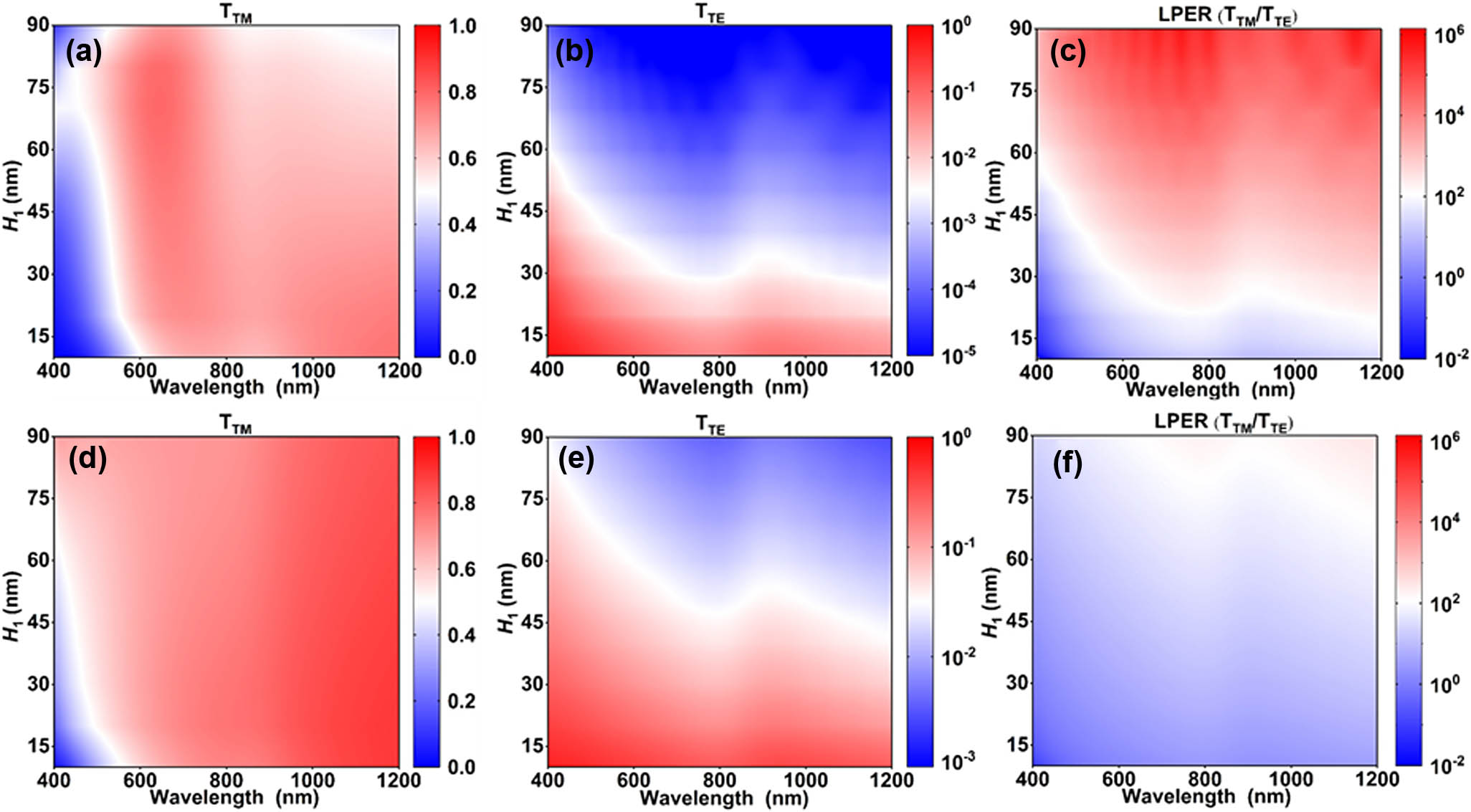Yuanyi Fan, Jinkui Chu, Ran Zhang, Chuanlong Guan, Jianying Liu, "Large-area ultracompact pixelated aluminum-wire-grid-based metamaterials for Vis-NIR full-Stokes polarization imaging," Photonics Res. 11, 1975 (2023)
Search by keywords or author
- Photonics Research
- Vol. 11, Issue 11, 1975 (2023)

Fig. 1. Large-area ultracompact pixelated aluminium wire-grid-based metamaterials for full-Stokes polarization imaging. (a) Schematic of the device design for Stokes parameters measurement. F 1 − F 3 x F 4 P 1 W 1 H 1 D 1 P 2 W 3 H 2 D 2

Fig. 2. Optical parameters of the double-layer nano wire-grid linear polarization filter: (a) TM light transmission, (b) TE light transmission, and (c) linear polarization extinction ratio. Optical parameters of the single-layer nano wire-grid polarization filter: (d) TM light transmission, (e) TE light transmission, and (f) linear polarization extinction ratio. The geometric parameters of the wire-grid are 200 nm period and 100 nm wire width. The spacing between the bilayer wire grids D 1 = 200 nm H 1
Fig. 3. Simulated optical properties of circular polarization filter with diffrerent D 2 CD = T LCP - T RCP CPER = T LCP / T RCP
Fig. 4. Device fabrication. (a1) Preparation of IPS flexible template with 0°, 45°, 90°, and − 45 °
Fig. 5. (a1), (a2) SEM surface views of IPS flexible template with 0°, 45°, 90°, and − 45 °
Fig. 6. (a) Experimental diagram of the fabricated device measurement system. (b) Example diagram of the imaging system imaging polarized light.
Fig. 7. (a), (c) Grayscale value response curves of the three F1–F3 linear polarization filter regions with different azimuthal angles of linear polarization light. (b), (d) Grayscale value response of the F4 circular polarization filter with different chiral circularly polarized light. (a), (b) The filter operates at a wavelength of 810 nm. (c), (d) The filter operates at a wavelength of 740 nm.
Fig. 8. Testing results of Stokes parameters. The subplots in the left column represent the theoretical and calculated pre-calibration, post-calibration, and post-compensation values of the Stokes parameters S 0 − S 3 S 0 − S 3
Fig. 9. Polarimetric imaging. (a) Physical image and its corresponding original imaging and polarization state schematic. (b) Calculated Stokes parameter image. (c) Theoretical Stokes parameter image of the targeted polarization mask.
|
Table 1. Parameters of Main Components

Set citation alerts for the article
Please enter your email address



